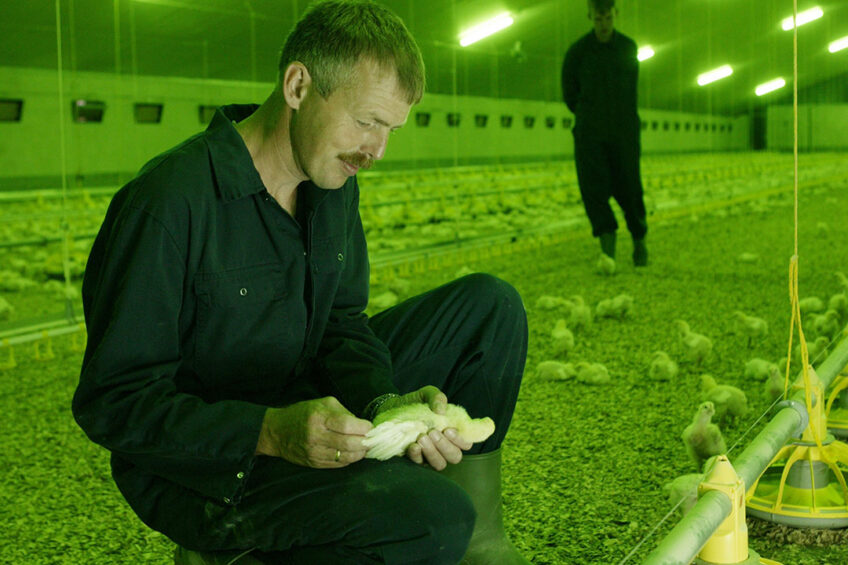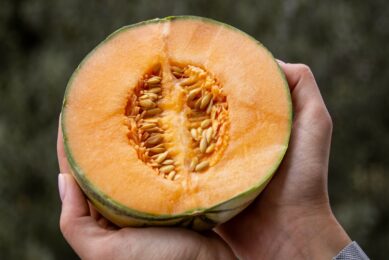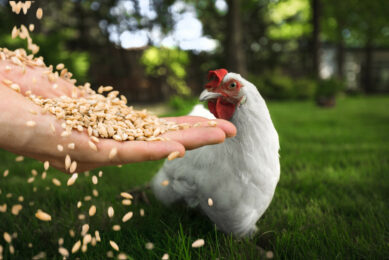Light colour affects poultry feed uptake and performance

The colour of light is a vital exogenous parameter and is now considered an important management tool in poultry production. Different colours have different effects on the performance of chickens depending on whether a given colour of light is used continuously throughout the production cycle or alternated with other colours.
Generally birds prefer to consume their feed under white light because it helps them identify texture differences which they cannot see under other colours. The feed intake response and growth performance of chickens reared under other light colours may not always be as good as with white light. Better results could be obtained, however, when light colours interact with other factors, such as light intensity and feed colour. The choice of a lighting colour system, therefore, should be made based on the intended production target or the production problem to be solved.
In some studies feed intake and growth performance were improved under blue or green lights provided at a high – rather than low – intensity. In other studies an improvement was also obtained with red-dyed feed given under blue light, but no other combinations of light and feed colours have yet been examined.
Growth rate and carcass weight
Green light stimulates the growth of birds at an early age and switching to a different light colour at 10 or 20 days of age may further stimulate growth. It was recommended that shifting green light to blue and blue to green improved growth and performance in broilers. Birds raised under blue light had the highest carcass weight, while birds raised under green light had the lowest carcass weight. Birds raised under red and white light treatments showed similar carcass weights (see Table 1).
Behavioural problems
Blue or green light may be used to keep birds calm by reducing hypothalamic gonadotropin production and hence reducing hyperactivity, pecking damage and energy costs, without compromising the welfare of the birds. In other cases, poultry producers may be prompted to use red light to control cannibalism because birds cannot see the blood stimulant under red light.
Red light, however, should not be used as the sole basis for alleviating cannibalism problems. Rather, other management and feeding strategies should also be adopted for better control; including beak trimming, lowering the brooding temperature, removal of severely injured birds, providing access to feed and water at all times and balancing the diet appropriately for age and type of chickens reared, etc.
Immune response
Immune response data are presented in Table 2. The total NDV antibody titer showed the highest concentration in the alternative green-blue light group compared to other groups, while no difference was noted in the circulating thyroid hormones (T3) and (T4) among birds reared under different light colours. The increased concentration of NDV should protect from clinical Newcastle disease, although it may not prevent virus shedding from the trachea.
Hematological traits
Hematological measurements (red blood cells, white blood cells, hematocrit value, hemoglobin and platelets) under different light treatments are shown in Table 3. An increase in the red blood cell count was seen under the yellow light treatment with a resulting increase in the hematocrit value that was ultimately reflected in a better growth response at five weeks of age compared to the other light treatments. The improved performance under the yellow colour treatment may also be attributed to the higher platelet level found in this case, helping to improve the general condition of the bird by acting on digestion, destroying bacteria, increasing the secretion of chemicals that attract neutrophils and monocytes to sites of inflammation, as well as growth factors to maintain the lining of blood vessels.
Other management factors
Another study was conducted to examine the performance of chickens reared under 5 different colour lighting schemes with 3 bird densities. It was shown that broilers reared under mixing blue-green light at the density of 12 bird/m2 had significant positive effects on growth performance compared to other lighting programmes and bird densities (see Table 4). The reduced performance under high stocking density for each light colour treatment, even with the blue-green light, may be attributed to the following factors:
- A general tendency towards a reduced growth rate with increasing stocking density, not only because of the reduced feed intake under such conditions but also because of the loss of feed energy due to immunological responses and other physiological adjustments. The reduced growth rate may further be attributed to the disruption in gut microflora that aids in digestion, the absorption of nutrients and improvement of the intestinal micro-architecture.
- High stocking density affecting the microbial profile of the litter with more toxins produced. Toxins affect the utilisation of feed nutrients for growth and other biological functions.
- Increased stocking density leading to increased levels of airborne dust and hence more respiratory disease challenges which can lead to the incidence of other problems.
In these situations, the birds may not exhibit their full production potential, especially when reared under monochromatic light conditions. The same applies to other factors which can negatively affect performance, such as poor nutrition, an adverse microclimate, disease outbreaks, or inadequate biosecurity plans.
References available on request.











